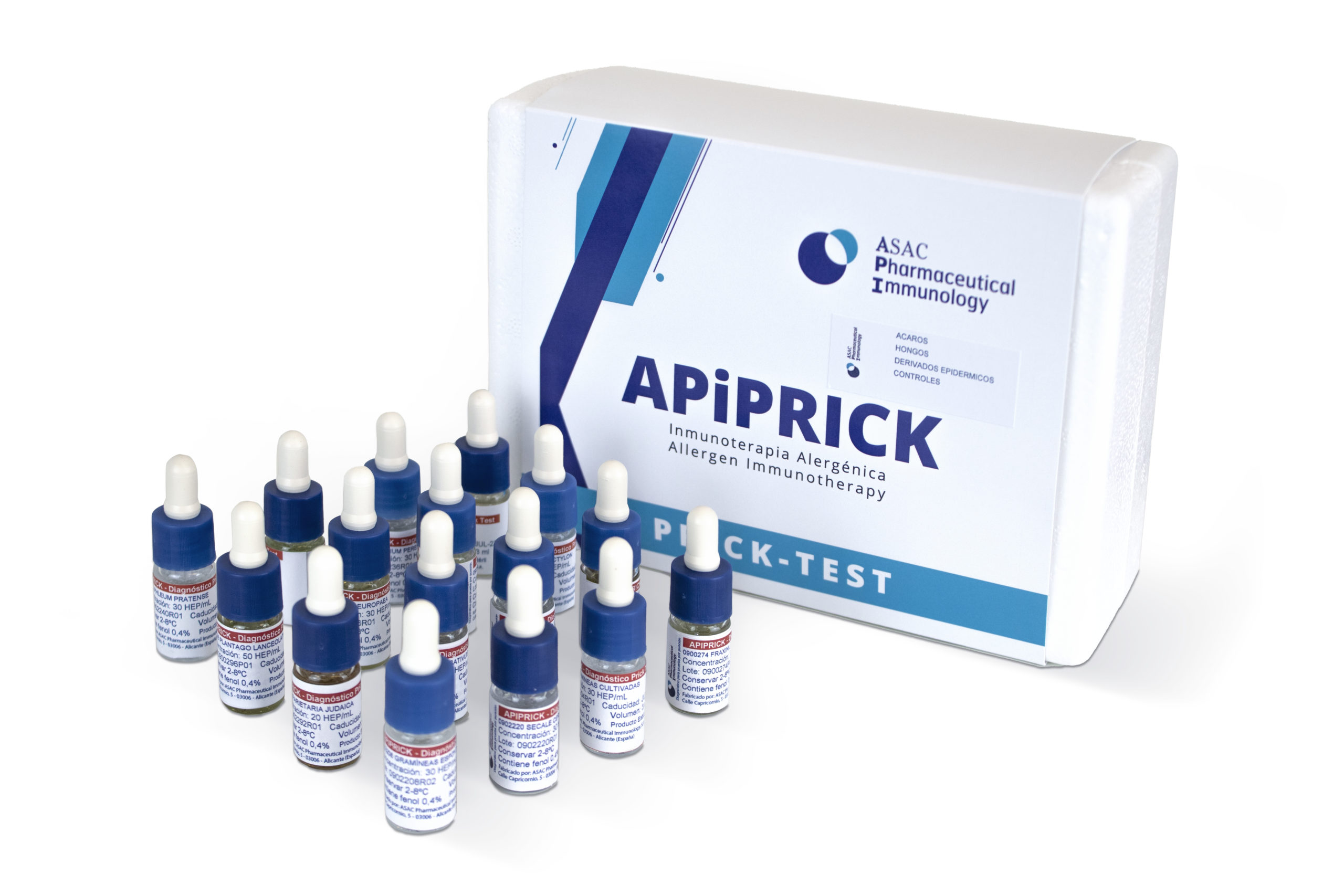

What are allergies?
Allergies, also called hypersensitivity reactions, are responses of the immune system (the defenses of our body) to come into contact with substances called allergens which are usually tolerated by most people. These are frequent pathologies that affect more than 25% of the world’s population according to the World Health Organization (WHO). In addition, over the last several decades, changes in the environment, habitat and way of life and a greater number of pets have favored the progression of allergy. Immunotherapy, also known as hyposensitizing therapy, reduces the sensitization of patients by attenuating the symptoms they experience in contact with the allergen. Immunotherapy is usually effective, the improvement is observed a few months after having started the vaccination, becoming apparent around the first year of treatment.
Diagnosis of allergy
A skin test or prick test can be used to diagnose allergy. The prick-test is a set of sterile allergen extracts prepared for the diagnosis of allergenic hypersensitivity by prick test.

APiPRICK
APiPRICK is a diagnostic prick-test composed of sterile allergen extracts prepared for the diagnosis of allergenic hypersensitivity by prick test.
Sterile allergen extracts prepared for the in vivo diagnosis of allergen hypersensitivity. The active ingredient is an unmodified allergen extract. Its concentration is adjusted based on biological activity and is expressed in HEP/ml, in PNU/ml (Protein Nitrogen Units) or in mg/ml, depending on the allergen.
Dermatophagoides pteronyssinus
Dermatophagoides farinae
Dermatophagoides mix
Blomia tropicalis
Lepidoglyphus destructor
GRASS POLLEN:
Cultivated grasses (Hordeum, Secale, Triticum)
Spontaneous-wild grasses (Dactylis, Lolium, Phleum, Poa)
Dactylis glomerata
Lolium perenne
Phleum pratense
Poa pratensis
Hordeum vulgare
Secale cereale
Triticum sativum
Cynodon dactylon
TREES AND SHRUBS:
Olea europaea
Cupressus arizonica
Platanus acerifolia
Fraxinus excelsior
Quercus robur
PLANTS:
Artemaisia vulgaris
Chenopodium album
Parietaria judaica
Salsola kali
Plantago lanceolata
Helianthus annuus
Ambrosia trifida
MOULDS:
Aspergillus fumigatus
Alternaria alternata
EPIDERMAL DERIVATIVES:
Canis familiaris
Felis domesticus
FOOD:
Trigo
Soja
Maíz
Nuez
Almendra
CONTROL:
Cloruro sódico
Histamina


